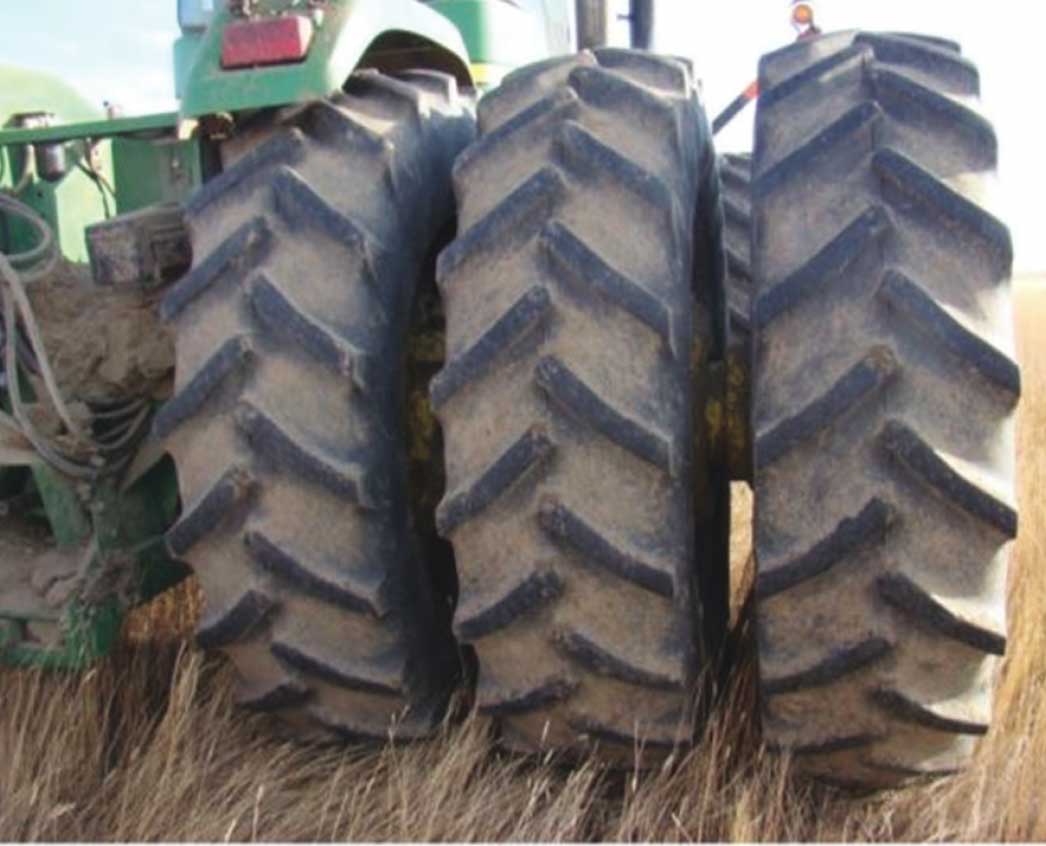Equipment sanitation slows the spread of clubroot
Key Result: Improved equipment sanitation is a rapid and cost-effective strategy to manage the spread of clubroot in canola. Agricultural, oil and gas, and construction industries can apply these techniques.
Project title, Principal investigators: “Evaluating physical and chemical methods for cleaning and disinfecting tools, machinery, equipment and other hard surfaces contaminated with clubroot,” Ron Howard, Alberta Agriculture and Forestry, Brooks
Funding: Alberta Canola, SaskCanola
Clubroot in canola is a destructive, soil-borne disease now confirmed in several areas across the Prairies. Once a field becomes infested, it is extremely difficult to get rid of the pathogen because it produces long-lived resting spores. Resting spores are mainly spread via contaminated soil carried from field to field by equipment. Farm, oilfield and construction machinery frequently carries soil from one location to another and therefore also carries the greatest risk of spreading clubroot disease.
New research on disinfectant: Michael Harding with Alberta Agriculture and Forestry is in the middle of a new project to provide more specific instructions on which disinfectants work best to eliminate living clubroot spores on openers, tires, boots and more. This research will wrap up in April 2018, just in time for seeding season.
In 2007, clubroot was added as a declared pest to Alberta’s Agricultural Pest Act, followed by the development of the Alberta Clubroot Management Plan to direct farmers and others working in infested fields on ways to prevent the build up and spread of clubroot. Cleaning and sanitation of machinery and equipment was one of the key recommendations in the plan, however, very little was known about the relative efficiency of these methods.
A three-year project led by Ron Howard evaluated a wide variety of physical and chemical methods including the efficacy of various disinfectants and thermal treatments against the resting spores of the clubroot pathogen under laboratory and greenhouse conditions. Effective treatments were also evaluated in commercial operations.
In the first year, researchers developed methods and protocols to treat suspensions of clubroot resting spores in the laboratory. The trials compared 10 commercial disinfectants at four concentrations (zero, one-half, one, two and five times the manufacturer’s label rate) for recommended exposure times. These treated resting spores were subsequently used to inoculate Brassica spp. seedlings, which were grown and monitored under greenhouse conditions for disease development and severity. Spore mortality was rated using the Evan’s blue staining analysis and two staining assays were evaluated with thermal treatments at 40.0°C and 60.0°C at various incubation times. In general, with few exceptions, most disinfectants appeared to be highly effective at one or more rates and the higher rates of thermal treatments appeared to be highly effective.
In 2010, a chisel plow and four-wheel-drive tractor and grain cart from a clubroot-infested commercial field were cleaned, pressure washed and disinfected with various products and sampled with sterile cellulose sampling sponges. The sponge samples were subsequently processed and used for bright-field microscopy analysis and plant-bait assays of clubroot resting spores. In 2011, the same methods were used for sampling and testing a centre pivot, chisel plow and four-wheel-drive tractor. In addition, soil and crop residues were collected intermittently during the cleaning process. Soil collected from the four-wheel-drive tractor and chisel plow was quantified and used for plant-bait assays.
The results from the field trials showed that cleaning, pressure washing and disinfection of farm and industrial equipment was effective at limiting the spread of the clubroot pathogen. Generally, most disinfectants appeared to be highly effective at one or more rates, as were higher rates of thermal treatments. All plant-bait assays were negative and all thermal treatments of 40°C to 100°C proved effective at various minimum incubation times. Future trials will include more rates of the highly effective products.
Overall, the results from the laboratory, greenhouse and commercial field trials showed that improved sanitation, including cleaning, pressure washing and disinfection of equipment, is a rapid and cost-effective strategy that can be broadly applied to manage clubroot in canola.





